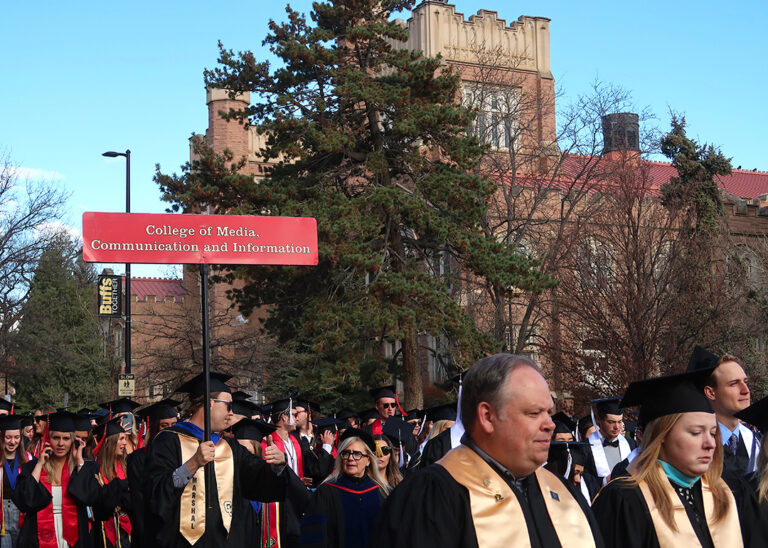The average college graduate in the United States leaves school with over $40,000 in student loan debt, a financial burden that can take decades to repay. For many students and families, that number isn’t just overwhelming, it’s paralyzing.
Whether you’re a high school senior preparing for college or a current student reconsidering how to finance your education, the idea of borrowing tens of thousands of dollars can feel like your only option.
But it’s not.
There are real, effective, and proven ways to pay for college without student loans, and this guide will walk you through 15 of them. From scholarships and grants to tuition-free colleges, community support, and military programs, these are tools anyone can use to pursue higher education without sinking into debt.
By the end of this article, you’ll have a roadmap on how to pay for college without loans.
Let’s dive in.
1. Apply for Grants
Grants are one of the most effective ways to reduce college costs without taking on debt. They’re widely available, need-based, and, best of all, don’t need to be repaid.
What Are Grants?
Grants are a form of free financial aid awarded primarily based on financial need. Unlike loans, you don’t have to repay them, making grants an ideal first line of funding for college expenses like tuition, housing, and books.
Where to Find Them
Most students can access grants by completing the Free Application for Federal Student Aid (FAFSA). This unlocks federal no loan college options like the Pell Grant, which can provide up to $7,395 per year.
States and individual colleges also offer their own grant programs. Be sure to research your state’s education office and apply as early as possible to maximize eligibility.
2. Maximize Scholarship Opportunities
Scholarships are a cornerstone of paying for college debt-free, and there are far more out there than most students realize. The key is to apply widely and strategically.
Don’t Stop After Admissions
A common misconception is that scholarships are only for high school seniors. In reality, thousands of awards are available specifically for current undergraduates and graduate students as well. Too often, students stop applying once they’ve started college and end up leaving free money on the table.
Local vs. National Scholarships
Local scholarships often have less competition and are offered by community organizations, credit unions, and school districts. National scholarships tend to offer larger awards but attract more applicants. A smart strategy is to apply for a mix of both to boost your odds of winning.
Where to Find Local Scholarships
If you’re still in high school, start with your guidance counselor, bulletin boards, or school newsletters. These spots are often the first places local scholarships are posted. Many community organizations also provide funding, including cultural or heritage associations, religious institutions, and civic groups like Rotary or Kiwanis.
If you’re already in college, check your financial aid office and career services department regularly. Many schools also have dedicated centers that support first-generation, low-income (FGLI) students with funding opportunities.
For example, Princeton’s Scholars Institute Fellows Program (SIFP) helps students discover scholarships and grants tailored to their needs.
Tips for Winning Scholarships
To stand out, tailor each application to the prompt, write a compelling personal essay, and never miss a deadline. Focus on niche scholarships that match your interests, background, or career goals. Fewer applicants means a better shot.
Equally important: research the scholarship organization itself. Every scholarship exists for a reason, whether it’s advancing a cultural mission, supporting students in a particular field, or encouraging community service.
Demonstrating genuine “fit” is often the single most important factor in winning. That means aligning your application, values, motivations, and long-term goals with the scholarship’s mission. Too many students skip this step and submit cookie-cutter applications.
Unlike universities, which admit board, diverse classes, scholarships are narrow and highly targeted. Show that you understand the purpose behind the award and that you’re the kind of candidate who will carry its mission forward.
Need a place to start? The Scholarship Institute makes it easy to discover and apply for scholarships tailored to your profile, all in one place.
Get access to our list of exclusive scholarship opportunities by signing up for Scholarship Institute today!
3. Consider Tuition-Free Colleges
One of the most powerful ways to avoid student loans is by attending a tuition-free college. These schools cover the full cost of tuition for all admitted students, often through endowments, work programs, or service commitments.
Examples of Tuition-Free Schools
- Berea College (Kentucky): Offers free tuition to all students and requires participation in a campus work-study program.
- College of the Ozarks (Missouri): Known as “Hard Work U,” it provides full tuition in exchange for student labor on campus.
- Deep Springs College (California): A highly selective two-year college offering a full scholarship covering tuition, room, and board.
And tuition-free education isn’t limited to undergraduates. A growing number of graduate and professional programs are also eliminating tuition for qualified students:
- NYU Grossman School of Medicine (New York): Offers full-tuition scholarships to all current and future MD students, regardless of financial need.
- Medical Scientist Training Programs (MSTPs): Federally funded MD-PhD programs at institutions like Stanford, Duke, and UCSF that provide full tuition and stipends to students pursuing dual medical and research degrees.
Eligibility and How to Apply
Each college has unique eligibility criteria, but most prioritize financial need, academic promise, and a commitment to service or labor.
Applications are typically submitted through the Common App or directly on the school’s website, often with supplemental essays. Deadlines are strict. Start early and stay organized.
4. Attend Community College First
Starting your college journey at a community college is a smart financial move that can significantly reduce the total cost of a four-year degree. Many students complete general education courses affordably before transferring to a university.
Cost Savings Breakdown
Community colleges typically charge a fraction of the tuition compared to four-year institutions. The average annual tuition at a community college is around $3,780, compared to $9,750 at public four-year colleges, and much more at private universities.
These savings on the first two years of college can dramatically lower your overall education costs.
Seamless Transfer Options
Most states have articulation agreements that guarantee credit transfer from community colleges to in-state public universities. Some even offer dual-admission programs, where students are pre-admitted to both institutions.
This transfer advantage isn’t limited to community colleges. Many state schools have established pipelines that make transferring into larger flagship universities more accessible and affordable for in-state students.
For example, regional campuses within a state system often have direct transfer agreements with the main university, allowing students to start at a lower-cost campus and move into the flagship school later.
Some well-known examples include:
- California: The California Community Colleges system has clear pathways into the University of California (UC) and California State University (CSU) systems, making it one of the most established transfer pipelines in the country.
- New York: Students at CUNY colleges or community colleges can transfer into SUNY schools through statewide articulation agreements.
- Texas: Many community colleges have agreements with state universities like the University of Texas or Texas A&M systems to streamline transfers.
- Cornell University (NY): Cornell’s School of Industrial and Labor Relations (ILR) notes that about one-third of its graduates are transfer students, a much higher percentage than most Ivy League programs. This makes ILR a standout example of how transferring can be a viable pathway into a highly selective institution.
Wherever you begin, be sure to meet with an academic advisor early on to plan your course load carefully. Confirm that your classes will transfer smoothly and count toward your intended major so you don’t waste time or money retaking credits.
5. Explore Work-Study Programs
Work-study programs offer students the chance to earn money while attending college, helping to offset educational expenses without taking on debt. These jobs are often flexible, allowing you to balance work and academics more easily than with traditional employment.
What Is Work-Study?
Federal Work-Study is a need-based financial aid program that provides part-time jobs for undergraduate and graduate students. These positions are often located on campus or with approved off-campus partners, such as nonprofit organizations or public agencies.
The goal is to support students financially while giving them work experience related to their studies.
Eligibility and Job Types
To qualify, you must complete the FAFSA and demonstrate financial need. If awarded, your financial aid package will include a work-study amount.
Common roles include:
- Administrative support
- Library assistant
- Tutoring
- Research assistance
Work-study jobs often pay minimum wage or higher and provide invaluable experience while helping you avoid student loans.
How to Find Word-Study Jobs
Once you’ve been awarded work-study, your school will guide you toward open positions. Most universities maintain online job boards dedicated to student employment, while others post listings on campus bulletin boards or distribute them through the career services office.
You can also connect directly with professors, departments, or labs if you’re looking for research-related roles. Starting your search early each semester will give you the best chance at securing the job you want.
6. Look Into Employer Tuition Assistance
Many companies now offer college tuition assistance programs as part of their employee benefits, making it possible to earn a degree while working and without accumulating student loan debt. These programs often cover part or all of your tuition and may also include reimbursement for textbooks or course fees.
Major Companies That Offer It
Well-known employers such as Amazon, Walmart, Starbucks, Chipotle, and Target have launched generous tuition assistance or reimbursement programs. Some cover 100% of tuition at partner institutions, especially for in-demand fields like healthcare, business, and technology.
How to Take Advantage
To benefit from employer tuition programs, look for companies with education benefits when job hunting or ask your current employer about tuition assistance options.
Be sure to understand any conditions tied to tuition assistance. Some organizations require you to work a certain number of hours per week or stay with the company for a set time after graduation.
Some employers also partner with alternative financing models, such as Income Share Agreements (ISAs), expanding the range of affordable pathways available to students and employees alike. More on ISAs below.
7. Enroll in ROTC or Military Programs
Military service can significantly reduce or eliminate your college costs while offering leadership training, discipline, and career opportunities. Reserve Officers’ Training Corps (ROTC) programs and military education benefits are excellent loan-free pathways.
ROTC Scholarships
ROTC scholarships are awarded by branches like the Army, Navy, and Air Force and cover up to full tuition, along with a monthly living stipend and book allowance. Students must commit to serving as commissioned officers after graduation, typically for 4–8 years, depending on the branch and role.
GI Bill & Service Commitments
Enlisting in the military also makes you eligible for the Post-9/11 GI Bill, which covers tuition, housing, and supplies for veterans and their families.
In exchange, you commit to serving your country, but the long-term educational and career benefits can be significant, especially if you’re looking to graduate debt-free.
8. Use a 529 College Savings Plan
A 529 college savings plan is a powerful, tax-advantaged way for families to save for education costs, helping students avoid loans by planning ahead. These plans are sponsored by states or educational institutions and can be used nationwide.
How It Works
You or your family contribute money to a 529 account, which grows over time through investment options like mutual funds. The funds can be withdrawn tax-free to pay for qualified education expenses such as tuition, fees, books, and even room and board.
Tax Benefits
529 plans offer multiple tax perks: contributions grow tax-deferred, and withdrawals are tax-free if used for qualified expenses. Some states also offer tax deductions or credits for contributions.
Even small, consistent deposits over time can reduce or eliminate the need for student loans.
9. Choose In-State Public Colleges
One of the most straightforward ways to save on tuition is by attending a public college in your home state. In-state tuition rates are significantly lower than out-of-state or private school costs, making this a smart no-loan strategy.
Cost Comparison: In-State vs. Out-of-State
On average, in-state tuition is about $9,750 per year, compared to $28,386 for out-of-state students. That’s a potential savings of tens of thousands over four years, without sacrificing the quality of education.
Reciprocity Agreements
Some states participate in tuition reciprocity agreements, allowing students to attend out-of-state schools at reduced or in-state rates.
Programs like the Western Undergraduate Exchange (WUE) or Midwest Student Exchange expand your affordable options—just be sure to check eligibility and application requirements.
10. Live at Home to Cut Costs
Living at home during college is one of the most effective ways to reduce overall expenses and avoid taking out student loans. Room and board often cost as much as tuition itself, making this strategy especially impactful.
Commuting vs. Dorm Living
While commuting may take more time and effort, the savings are substantial. Students who live at home can avoid paying $12,986 per year in housing alone. Many commuter students also benefit from local support systems and access to part-time jobs.
Hidden Savings
In addition to saving on rent, students living at home may spend less on food, laundry, furniture, and utilities. These smaller expenses add up fast, so staying with family can result in thousands of dollars in annual savings, helping students stay debt-free.
Another advantage: if your university provides grants or financial aid, you won’t lose them by living off-campus. Instead, schools typically “refund” the portion of aid that would have gone toward housing or a dining plan, allowing you to put that money toward other educational expenses.
11. Take Advanced Placement (AP) or Dual Enrollment Courses
High school students can get a head start on college by earning credits before graduation, shortening the time and money needed to complete a degree.
Reduce Time in College = Lower Costs
AP and dual enrollment courses allow students to fulfill general education requirements early. By entering college with credits already earned, students can graduate sooner, saving a semester (or more) of tuition, books, and living expenses.
Getting Credit Transfer Right
To maximize savings, confirm that your target college accepts your credits. While AP scores of 3 or higher are often eligible, dual enrollment credits may depend on articulation agreements between high schools and colleges.
Always double-check with your future school’s registrar’s office. And, don’t forget that many colleges publish this information online for easy access.
For example, Princeton’s advising site clearly outlines how AP scores translate into placement and credit. Reviewing these resources ahead of time can help you plan your high school course load more strategically.
12. Explore Income-Share Agreements (ISAs)
Income-Share Agreements (ISAs) offer alternatives to student loans by allowing you to pay for college in exchange for a fixed percentage of your future income.
What They Are
With an ISA, a school or private organization covers part of your tuition. In return, you agree to pay back a percentage of your gross income for a set period after graduation, typically 5-10% of earnings for 2-10 years.
Unlike loans, ISAs usually have a payment cap and don’t charge interest, so you’ll never pay beyond a predetermined maximum. Repayment only begins once you’re earning above a certain income threshold, making this model far more flexible than traditional debt.
This can reduce upfront financial pressure and align repayment with your earning potential.
Where to Find ISAs
- General Assembly: A career-training provider that has offered ISAs to make tech and design programs more accessible.
- Purdue University (Back a Boiler program): One of the first major universities to pioneer ISAs in the US.
- Lambda School (now BloomTech): Known for ISA-based tuition, especially in coding and data science.
- Other private education providers: Many bootcamps and skills-focused schools offer ISAs as part of their financing options, especially in fields like healthcare, tech, and business.
Pros & Cons
Pros:
- No payments while in school
- Flexible repayment based on income
- No interest charges
- Clear payment caps
- Potential to avoid long-term debt
Cons:
- High earners may pay more than the original tuition amount
- Limited availability across schools and majors
- Contracts can be complex, so always read the fine print
13. Apply for Institutional Aid
Many colleges offer their own financial aid in addition to federal and state programs, often in the form of grants, scholarships, and need-based support.
How to Approach Schools for More Aid
Start by completing the FAFSA and the CSS Profile (if required). After receiving your financial aid package, don’t hesitate to contact the school’s financial aid office to ask if more funding is available, especially if your family’s financial situation has changed or you’ve received a better offer from another school.
Before reaching out, it’s also a good idea to run the numbers yourself. Most colleges offer a net price calculator on their financial aid websites, which lets you estimate your costs and aid eligibility without sharing private financial information directly.
For example, Princeton provides a net price calculator that shows what a family might realistically expect to pay after grants and scholarships. Comparing calculators across schools can help you identify which institutions are likely to be most generous before you enter formal negotiations.
Negotiating Offers
Colleges sometimes adjust aid packages when presented with competing offers or updated financial info. Be polite, provide documentation, and express genuine interest in the school.
A thoughtful appeal can result in thousands of dollars in additional aid. No loans required.
14. Start a Side Hustle or Part-Time Job
Working while in school can help you pay for everyday expenses and chip away at tuition without relying on loans.
Best Student-Friendly Jobs
Some flexible, low-stress options include:
- On-campus jobs: These often pay minimum wage or slightly above (around $10-$15/hour), but they’re convenient and built around student schedules.
- Tutoring: High-demand subjects like math, science, or standardized test prep can pay extremely well. At Scholarship Institute, for example, tutors earn anywhere from $80-$120 per hour, depending on subject and experience.
- Freelancing (writing, design, coding): Rates vary widely, but even part-time projects can generate $500-$1,500 per month once you build a client base.
- Pet sitting or dog walking: Apps like Rover often allow students to earn $15-$25 per walk or visit, which adds up quickly with repeat clients.
- Driving for apps like Uber or DoorDash: While earnings depend on location and hours, motivated drivers can clear $2,000-$3,000 per month. And in rare cases, with full-time commitment, even $10,000+ per month.
Adding even a modest side income can offset everyday expenses, reduce reliance on loans, and sometimes create professional experience that aligns with your long-term career goals.
Managing Work and Studies
The key is finding a job that fits your schedule and energy level. Start with 10–15 hours a week and monitor how it affects your grades and mental health.
Look for jobs that align with your major to gain relevant experience while earning money.
15. Leverage Crowdfunding or Community Support
If traditional aid isn’t enough, don’t underestimate the power of asking for help from your network or community.
GoFundMe, Scholarships Sponsored by Churches/Clubs
Platforms like GoFundMe let you create a personal campaign to raise funds for tuition, books, or housing.
You can also check with local churches, community centers, or clubs (like Rotary or Kiwanis) that often award small scholarships. These smaller efforts can add up fast and show that you’re resourceful and determined to succeed.
Conclusion
Now that you know how to pay for college without loans, you know that it isn’t just a dream; it’s a realistic, achievable goal when you explore the right strategies. From grants and scholarships to tuition-free colleges, work-study college programs, and employer assistance, there are numerous paths that lead to a debt-free degree.
You can also take advantage of options like community college transfers, military benefits, 529 savings plans, and even crowdfunding to lighten the load.
The key is to plan early, stay proactive, and explore every opportunity available. With the right mix of funding sources, you can graduate without the weight of student loans dragging you down.
Find scholarships tailored to your goals with Scholarship Institute’s search tool. The earlier you begin, the more you can save—and the closer you’ll be to a future free of college debt.
About our content reviewer

Daniel Kyong is a founding partner of Educo. A Princeton University graduate, he brings over a decade of experience in test prep and college admissions. Before Educo, Daniel worked with national test prep companies like PrepScholar, Cardinal Education, and Summit, where he led curriculum design and tutoring. At Educo, he serves as its Chief Education Officer, building a new standard for tutoring grounded in true expertise, care, and results.
Our Editorial Team, with a rich background in educational content creation, prioritizes accuracy and quality in every article. We are committed to producing expert content tailored to meet the academic needs of college and high school students, ensuring they receive well-researched and trustworthy information for their educational journey.








